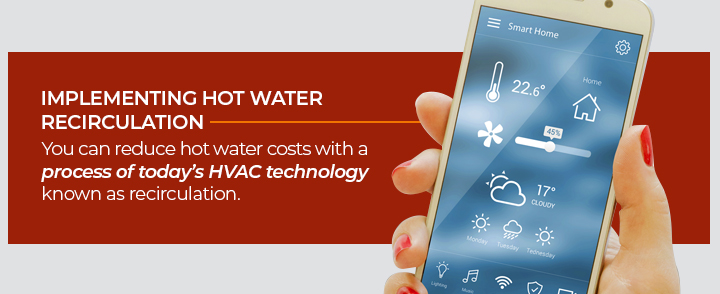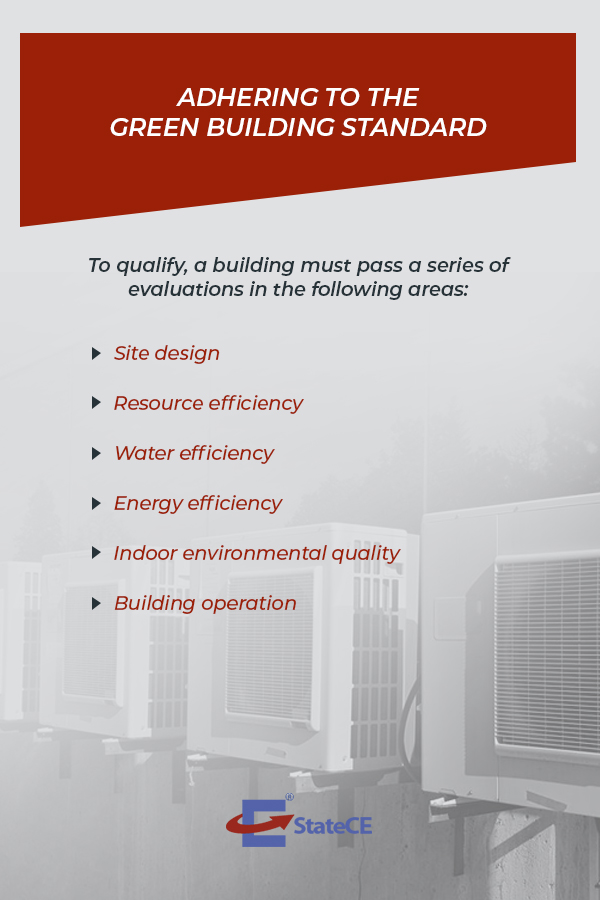In order to get the most from today’s heating and cooling systems, you need to understand the makings of the latest HVAC technology. As buildings and utilities become more sustainable and environmentally friendly, the HVAC industry has developed new technology to meet these challenges. Some of the developments are complicated while others are simpler and easy for the average user to understand. Either way, the new systems that are taking over can save users money in the long run.
For anyone looking to get into the HVAC industry, there is reason to be optimistic. With standards changing and evolving, the industry needs qualified workers who stay abreast of the latest developments. Are you interested in entering the field? Then you should know about these leading HVAC technology trends of 2019.
1. Installing Zoning Systems to Regulate Temperatures
One of the most accommodating new trends in HVAC technology is the option of interior zoning, in which different temperatures can be set within individual parts of a house or building, all on the same heating/cooling system. Zoning systems are created with ductwork dampers, which allow you to control HVAC settings on a room-by-room basis with individual thermostats.
In one room, for example, someone may want the temperature set to 65°F, an ideal level for most adults. In another room down the hallway, you might have someone who wants it at 68°F. Both of these temperatures can be achieved just rooms apart from one another when a building establishes HVAC zoning systems.
Zoning systems can also work on a floor-by-floor basis. On one floor, you might have a number of residents who wish to keep their rooms in the 63°F–68°F range. The next floor up, however, could be comprised of rooms which are either rarely occupied or mostly used for storage. With zoning established, you could set the temperature in the unoccupied areas at lower levels than in the living quarters.
With zoning systems, you could even create vastly different temperatures in different wings of a building. If you have a building where people with special needs reside in one of the wings, the temperature could be set differently in that wing to accommodate the sensitivities of those residents. You could also have the temperature set at slightly lower levels in the hallways and corridors. Finally, the dark spaces in a house or building can be set at different levels to the main areas.
2. Embracing Smart HVAC Systems
The Internet of Things has made it possible for homeowners and building operators to communicate with all sorts of powered devices, including HVAC systems. At the click of a button or the prompt of a command, smart homes and buildings allow occupants to adjust everything from lights and windows to heat and fans with a mobile device.
As most users would agree, the great thing about today’s smart HVAC system is how it can be controlled either manually or remotely:
- If you happen to be standing by the central unit or one of the thermometers, you can adjust the knobs manually to your preferred temperature level.
- You could adjust the room’s temperature from the comfort of your sofa with a mobile device in hand.
- If the home or building is equipped with an Amazon Alexa or a similar virtual assistant software, you could even control the temperature settings with voice commands.
Another major advantage to smart HVAC is that you do not need to be present to adjust the settings. If you are heading home from work on a cold evening, you could activate the heater from your smartphone before you even arrive. This gives the heating system time to work its magic within your living quarters. Smart HVAC systems allow you to set separate rooms to different temperature levels.
3. Using More Efficient Heat Pumps
Heating systems have traditionally relied on natural gas and fossil fuel for energy, but some of the newer, more efficient systems alternate between natural gas and electricity. Though costlier to install, these systems can save users money over the long run.
During months when outside temperatures are cold, natural gas is the favored means of energy because of its clean-burning efficiency. A home or building can be heated quite rapidly by systems which run on the fuel. With the newer technology, these systems also can be programmed to detect when desired temperatures have been reached and, once there, go into energy-save mode.
In late spring through early fall, these same heating pumps can work more efficiently on electricity. The difference between the two energy sources is how each works with the underground tubing on a given property:
- During winter, the tubes allow thermal pumps to extract heat from the ground.
- In the warmer months, the ground is used to absorb heat.
4. Rising Deployment of Eco-Friendly Air Conditioning
Today’s eco-friendly air conditioners, such as thermal ones, run on solar power as well as natural gas. These systems require less energy and consist of fewer internal moving parts. As such, these air conditioners run longer and necessitate less maintenance than their more conventional counterparts.
One of the most energy-efficient options is the ice-powered air conditioner, which generates large volumes of ice during off hours. In the daytime, the refrigerant is cooled by the accumulated ice supply, reducing power usage by roughly 30 percent. When combined with variable refrigerant flow (VRF), an air conditioning system can be adjusted for the individual needs of different rooms and areas. The VRF system is comprised of an outdoor machine equipped with various pipes that each go to different parts of the house or building.

5. Implementing Hot Water Recirculation
One of the more costly factors associated with heating systems is hot water, which can cause bills to spike during months when warmer water is especially needed, such as in the wintertime. Thankfully, you can reduce hot water costs with a process of today’s HVAC technology known as recirculation. The immediate effects of this process are evident because you never have to wait for water to warm up when you turn on a faucet.
With recirculation, unused water which has already been heated is released the moment you turn the faucet to the left, giving you immediate hot water. Since you never have to reheat a heated water supply, you save money on your water-heating bills. Users of this technology can save roughly 12,000 gallons of water per year.
6. Harnessing Solar for HVAC
One of the most eco-friendly sources of energy for modern homes and buildings is the sun. On days when the sky is clear, roofs equipped with solar panels convert energy drawn from the rays of the sun for use in lieu of gas, coal, and electricity. As the most natural and non-emitting source of energy known to science, solar energy is now being used more widely as an alternative to electrical lines and fuel to power everything from lights and appliances to heaters and air conditioners.
On residential and business properties, solar HVAC units can be incorporated into a wide array of design schemes, both vintage and modern:
- These units include solar panels which draw thermal and lighting energy from the rays of the sun.
- The thermal energy converts into heat through a process which involves water and antifreeze, which are mixed and heated by solar energy and sent through a heat exchanger.
For air conditioning, the energy drawn from solar panels can provide the necessary electricity to power the system. Solar panels can be retrofitted to any home or building equipped with an A/C system. Newer homes and buildings are generally equipped with solar cooling systems, which evaporate contained water to cool interior air.
7. Expanding Geothermal HVAC Capabilities
Below the Earth’s surface, temperatures tend to be consistent throughout the year, regardless of the current temperatures above the ground. During months when above-ground ambient temperatures are prone to heat waves, temperatures are relatively constant 6 feet below ground level. Likewise, ambient temperatures in the freezing winter months are not reflected to such extremes at underground depths of 6 feet or more.
With the use of a piping system known as an Earth loop, geothermal HVAC systems utilize the consistency of underground temperatures for interior heating and cooling purposes. Water runs through this buried set of pipes, adjusting to a desired temperature. Inside the home or building, a unit that contains a compressor, fan, and pump sends the desired air temperature through the interior rooms and corridors.
Geothermal energy is an expanding option in the U.S., where digging and mining operations have spread in an effort to unearth more domestic energy options. In recent years, domestic drilling has led to the discovery of natural gas sources, which have expanded the range of fuel and energy options available to American businesses and consumers. These developments gradually free the nation from its longstanding reliance on foreign petroleum-based products. Geothermal HVAC systems are another extension of this domestic unearthing trend.
8. Exploring Opportunities With DeVAP HVAC
Desiccant Enhanced Evaporative (DEVap) is a newer type of air cooling system that uses desiccants to absorb water from the air. The system works by absorbing water into a honeycomb material, which is then exposed to a blowing fan evaporating the water.
As the fan blows through the cold, vanishing water in the honeycomb, the air cools to desired temperatures, and it gets released into the occupied interior areas of a building. DEVap HVACs also absorb air-bound humidity, rendering the air cleaner and purer in the process. DEVap systems require minimal energy and do not contain refrigerants.
9. Adjusting to Sustainable Building Design
For newer homes and buildings, architects take sustainability into account in the design schemes. The goal is to construct interiors where desired temperatures can be more easily maintained throughout the year, regardless of the temperatures outside. At the same time, architects design homes and buildings to more readily accommodate today’s newer, more efficient, and eco-friendly HVAC systems.
The layout of a home or building can affect the overall spread of heat and cooled air. If the interiors are designed with natural airflow in mind, occupants can cut their HVAC usage and trim costs in the process. Even if these properties rely on fossil fuel, they reduce their carbon footprint by having more efficient heating and cooling systems, which consume less energy.
Sustainable building design is alternately referred to as green construction. At the heart of the concept is the arrangement of ventilation systems, which must be directed to maximize the flow, release, and availability of air at desired temperatures. The concept also relies on building materials less affected by ambient temperatures. In older homes and building, walls and interior frames that absorb outside temperatures can exacerbate conditions inside, forcing occupants to rely more heavily on heating and cooling systems. Green construction minimizes these effects, usually in combination with alternative energy sources.
10. Adhering to the Green Building Standard
As building designs become more environmentally sound, the American National Standards Institute (ANSI) has initiated the National Green Building Standards (NGBS) certificate program. To qualify, a building must pass a series of evaluations in the following areas:

- Site design: Is the building designed for maximum use of green energy? Does the interior layout allow for efficient airflow? The placement and construction of the building can affect its rating with the NGBS.
- Resource efficiency: Can sources of renewable energy be easily accessed within the design and layout of the building. Are the access points situated in places which allow for easy access from all conceivable areas of the building?
- Water efficiency: Does the water achieve desired heat levels without over-taxing the heating system? Can the water circulate efficiently without causing strain on the system?
- Energy efficiency: Can energy be accessed from all points in the building with maximum efficiency? Are there a sufficient number of power sources for the probable number of devices in a given room, or would a limited number of outlets be overdrawn?
- Indoor environmental quality: Are the interiors designed and laid out for optimal airflow and minimized humidity and moisture, or do certain rooms suffer from poor insulation or bacteria-causing moisture?
- Building operation: Can the building be easily entered, navigated, and exited from multiple directions? Would devices be able to run on green energy in any room, or would extension cords or non-green options be necessary?
Building owners must consider these kinds of questions when submitting to an NGBS evaluation, and HVAC becomes a key consideration in this mix. The aim is to determine whether a building is fully equipped and optimized for the green standards of tomorrow, or whether the building’s layout squanders efficiency, minimizes green energy options, and forces an over-reliance on conventional forms of energy.
Learn About the Latest HVAC New Technology in 2019
 As increasing numbers of home and building owners demand green-energy options, technology developers need to meet these demands by providing systems which are more efficient and friendly to the environment. While the latest HVAC technology is already on its way toward meeting that goal, standards will improve as consumers demand more options with their devices.
As increasing numbers of home and building owners demand green-energy options, technology developers need to meet these demands by providing systems which are more efficient and friendly to the environment. While the latest HVAC technology is already on its way toward meeting that goal, standards will improve as consumers demand more options with their devices.
If you are looking for a career in the heating and cooling industry, you need to be up to date on the new technology in the HVAC field. At StateCE, we offer various courses which cover different aspects of the HVAC industry. Learn more about the HVAC Continuing Education Programs offered at StateCE.

